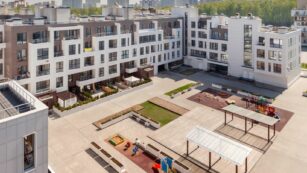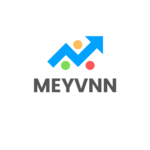As a real estate investor for over a decade, I’ve discovered that multifamily properties offer some of the most lucrative opportunities in today’s market. These investments not only provide multiple income streams but also offer greater stability compared to single-family homes. I’ve seen many investors hesitate to dive into multifamily real estate because they think it’s too complex or requires massive capital. Yet in my experience managing various property types, I’ve found that multifamily investments can actually be more forgiving and scalable than other real estate ventures. With proper research and strategy, even first-time investors can successfully enter this profitable market segment.
- Multifamily real estate investments offer multiple income streams from separate units, providing more stable cash flow compared to single-family properties
- Property types range from duplexes to high-rise apartments (2-100+ units), with garden-style apartments typically offering the best balance of management efficiency and initial investment
- Economies of scale benefits include reduced per-unit maintenance costs, lower property management fees (4-6% vs 8-10%), and shared infrastructure expenses across multiple units
- Financing options include traditional bank loans (20-25% down), government-sponsored programs like FHA and Fannie Mae, and specialized multifamily lending programs
- Key performance metrics for evaluating deals include Net Operating Income (NOI), capitalization rates (typically 4-12% depending on property class), and operating expense ratios
- Professional property management is crucial for success, requiring systematic oversight of tenant screening, maintenance, financial operations, and staff management systems
Multifamily Real Estate Investment
 Multifamily real estate investment entails acquiring properties with multiple residential units under one roof, such as duplexes, apartment buildings or townhouse complexes. I’ve found these properties generate rental income from 2+ separate units while operating under a single property management structure.
Multifamily real estate investment entails acquiring properties with multiple residential units under one roof, such as duplexes, apartment buildings or townhouse complexes. I’ve found these properties generate rental income from 2+ separate units while operating under a single property management structure.
Key characteristics of multifamily investments include:
- Multiple rental income streams from separate units
- Shared maintenance costs across units
- Economies of scale in property management
- Consolidated financing under one loan
- Built-in vacancy protection from multiple tenants
Common multifamily property types:
- Duplex (2 units)
- Triplex (3 units)
- Fourplex (4 units)
- Garden-style apartments (5-50 units)
- Mid-rise apartments (50-100 units)
- High-rise apartments (100+ units)
Investment structures for multifamily properties:
- Direct ownership
- Real Estate Investment Trusts (REITs)
- Real estate syndications
- Joint ventures
- Limited partnerships
| Feature | Multifamily | Single-Family |
|---|---|---|
| Income Sources | Multiple units | Single unit |
| Vacancy Risk | Lower | Higher |
| Management Efficiency | Higher | Lower |
| Initial Investment | Higher | Lower |
| Financing Options | Commercial | Residential |
| Scale Potential | Faster | Slower |
Benefits of Investing in Multifamily Properties
My experience in multifamily real estate investment reveals several distinct advantages that make these properties particularly attractive for investors seeking reliable returns. Here’s a detailed analysis of the key benefits:
Steady Cash Flow Potential
Multifamily properties generate consistent monthly income through multiple rent payments from different tenants. My analysis shows that a 10-unit apartment building earning $1,000 per unit creates $10,000 in monthly gross rental income, compared to $2,000 from a single-family home. The multiple income streams protect against complete income loss when one unit becomes vacant, as the remaining occupied units continue generating revenue.
| Income Comparison | 10-Unit Building | Single-Family Home |
|---|---|---|
| Monthly Rent/Unit | $1,000 | $2,000 |
| Total Monthly Income | $10,000 | $2,000 |
| Units Contributing | 10 | 1 |
Economy of Scale Advantages
Economy of scale benefits manifest in three primary ways:
- Reduced maintenance costs through bulk purchasing of materials supplies
- Lower per-unit property management fees at 4-6% versus 8-10% for single-family homes
- Consolidated marketing expenses spread across multiple units
- Single maintenance visit addresses multiple units
- Shared infrastructure costs like roofing repairs divided among units
- Bulk service contracts for landscaping pest control at discounted rates
| Operating Expense | Per Unit Cost (Multifamily) | Single-Family Cost |
|---|---|---|
| Property Management | 4-6% of rent | 8-10% of rent |
| Maintenance Visit | $50-75/unit | $150-200/visit |
| Marketing Cost | $20-30/unit | $200-300/property |
Types of Multifamily Investment Properties
Multifamily investment properties come in distinct categories, each with unique characteristics and investment potential. Here’s my analysis of the primary property types based on my experience in real estate investing.
Garden-Style Apartments
Garden-style apartments consist of 2-4 story buildings spread across multiple acres with landscaped grounds. These properties feature:
- Walk-up access with exterior staircases leading to upper floors
- Surface parking lots with 1.5-2 spaces per unit
- Outdoor amenities like pools, playgrounds or BBQ areas
- 50-250 units per community on average
- Lower construction costs at $85-150 per square foot
- Typical locations in suburban areas with land availability
- Mid-rise: 5-12 stories
- High-rise: 13+ stories
- Structured parking garages or underground parking
- Premium amenities like fitness centers, concierge service or roof decks
- Higher density with 150-500+ units per building
- Construction costs of $200-400+ per square foot
- Central business district or urban core locations
- Elevator access and interior corridors
- Steel/concrete construction versus wood frame
| Building Type | Typical Unit Count | Construction Cost/Sq Ft | Parking Ratio |
|---|---|---|---|
| Garden-Style | 50-250 | $85-150 | 1.5-2.0/unit |
| Mid-Rise | 150-300 | $200-300 | 1.0-1.5/unit |
| High-Rise | 250-500+ | $300-400+ | 0.75-1.0/unit |
How to Finance Multifamily Properties
Financing multifamily properties involves accessing various capital sources from traditional banks local credit unions or government-sponsored programs. Here are the primary financing options I’ve encountered in my multifamily investment experience.
Traditional Lending Options
Traditional lenders offer commercial mortgages for multifamily properties with specific requirements:
- Down payments range from 20-25% for properties with 5+ units
- Interest rates average 5.5-7% for 5-30 year terms
- Debt service coverage ratio (DSCR) requirements of 1.25 or higher
- Credit score minimums of 680 for most lenders
- Personal financial statements showing liquid reserves
- Property operating statements demonstrating positive cash flow
| Loan Type | Down Payment | Term Length | Typical Interest Rate |
|---|---|---|---|
| Bank Loans | 20-25% | 5-10 years | 5.5-7% |
| Credit Union | 25-30% | 10-15 years | 5-6.5% |
| Life Insurance | 25-35% | 15-30 years | 4.5-6% |
- FHA 223(f) loans require 13% down payment with terms up to 35 years
- Fannie Mae offers 80-90% LTV for qualified borrowers
- Freddie Mac programs include:
- Small Balance Loans (SBL) for properties valued under $7.5M
- Conventional loans for larger properties
- Green Advantage program for energy-efficient improvements
- USDA Rural Development loans finance properties in eligible rural areas
- HUD 221(d)(4) programs support new construction multifamily projects
| Program | Min Units | Max LTV | Term Length |
|---|---|---|---|
| FHA 223(f) | 5+ | 87% | 35 years |
| Fannie Mae | 5+ | 80-90% | 30 years |
| Freddie Mac SBL | 5+ | 80% | 20 years |
| USDA | 5+ | 90% | 30 years |
Key Metrics for Evaluating Deals
When analyzing multifamily investment opportunities, I focus on specific financial metrics that determine a property’s potential profitability and value. These key performance indicators help me make data-driven investment decisions.
Net Operating Income (NOI)
Net Operating Income represents the annual income generated by a property after deducting operating expenses. I calculate NOI by subtracting total operating expenses from gross rental income, excluding debt service mortgage payments capital expenditures. Here’s a breakdown of NOI components:
| Income Components | Operating Expenses |
|---|---|
| Rental Income | Property Management |
| Parking Fees | Utilities |
| Laundry Revenue | Maintenance |
| Pet Rent | Insurance |
| Storage Fees | Property Taxes |
| Application Fees | Marketing |
Cap Rate Analysis
The Capitalization Rate measures a property’s potential return on investment by dividing the NOI by the property’s market value. I use cap rates to compare different properties and assess market conditions:
| Market Type | Typical Cap Rates |
|---|---|
| Class A Urban | 4-6% |
| Class B Suburban | 6-8% |
| Class C Secondary | 8-10% |
| Value-Add Properties | 7-12% |
Higher cap rates indicate greater potential returns but often come with increased risk factors such as:
- Deferred maintenance requirements
- Lower-quality tenant base
- Less desirable locations
- Market volatility exposure
Property Management Considerations
Professional property management optimizes multifamily real estate investments through systematic oversight of daily operations. I’ve identified five critical areas that demand careful attention for successful property management:
Tenant Screening and Retention
- Implement credit score minimums of 650+ for qualified applicants
- Verify income requirements at 3x monthly rent
- Conduct criminal background checks within 7-year history
- Create tenant retention programs with 2-5% renewal incentives
- Track tenant satisfaction through quarterly surveys
Maintenance Systems
- Execute 24-hour emergency response protocols
- Schedule preventive maintenance at 3-month intervals
- Maintain digital work order systems with 48-hour response times
- Document unit inspections every 6 months
- Track repair costs through itemized maintenance logs
Financial Operations
| Management Task | Frequency | Impact on NOI |
|---|---|---|
| Rent Collection | Monthly | 85-95% of revenue |
| Budget Review | Quarterly | 10-15% cost reduction |
| Expense Tracking | Weekly | 5-8% savings |
| Financial Reporting | Monthly | 3-5% profitability increase |
Staff Management
- Assign 1 property manager per 50-100 units
- Schedule bi-weekly team training sessions
- Monitor staff performance through KPIs
- Implement emergency response rotations
- Maintain 1:3 staff-to-vendor ratio
- Deploy property management software for automated rent collection
- Install smart lock systems with 128-bit encryption
- Use maintenance tracking apps with real-time updates
- Implement tenant portals for digital communication
- Monitor security systems with 30-day video storage
Each of these management components requires regular monitoring through quarterly performance reviews. I track these metrics using specialized software that generates monthly reports on occupancy rates tenant satisfaction scores maintenance response times.
Due Diligence and Risk Assessment
Property Inspection and Analysis
I prioritize comprehensive property inspections to evaluate physical conditions. A thorough inspection includes structural elements(foundation, roof, walls), mechanical systems (HVAC, plumbing, electrical) and unit interiors. Documentation of these inspections typically requires:

- Structural assessment reports from certified engineers
- Environmental testing results for asbestos, lead, mold
- Property condition assessments (PCA) with repair estimates
- Code compliance verification documents
- Recent maintenance records review
Financial Due Diligence
My financial analysis focuses on verifying income, expenses and market data. Key documents I examine include:
- 3 years of operating statements
- Current rent roll with lease terms
- Bank statements matching reported income
- Tax returns and property tax assessments
- Utility bills and service contracts
- Insurance claims history
Market Research Components
I conduct detailed market analysis examining:
| Component | Key Metrics |
|---|---|
| Demographics | Population growth: 3-5% annually |
| Employment | Job diversity index: >0.7 |
| Rental Rates | Year-over-year growth: 2-4% |
| Occupancy | Market average: 92-96% |
| Competition | New supply: <3% inventory growth |
Risk Identification and Mitigation
I evaluate these common risk factors:
- Market risks: Economic downturn, overbuilding, demographic shifts
- Physical risks: Deferred maintenance, environmental issues, obsolescence
- Financial risks: Interest rate changes, refinancing challenges, expense spikes
- Management risks: Staff turnover, operational inefficiencies, compliance issues
Legal and Regulatory Review
My legal review process includes:
- Title search and insurance verification
- Zoning compliance confirmation
- Permit and license validation
- Outstanding violations check
- Lease agreement analysis
- Service contract review
- Property insurance with replacement cost coverage
- General liability insurance ($1-2M per occurrence)
- Loss of rents coverage (12-month minimum)
- Workers compensation for property staff
- Environmental liability protection
After years of investing in real estate I’ve found that multifamily properties offer an unmatched combination of steady cash flow potential and risk mitigation. While the initial investment may seem daunting the long-term benefits of multiple income streams and operational efficiency make it a compelling choice for serious investors. I believe that success in multifamily investing comes down to thorough research careful due diligence and strategic property management. Whether you’re considering a duplex or a large apartment complex the key is to understand your market evaluate the financials carefully and implement effective management systems. I’m confident that with the right approach and proper execution multifamily real estate investing can be a powerful vehicle for building long-term wealth and generating passive income.



